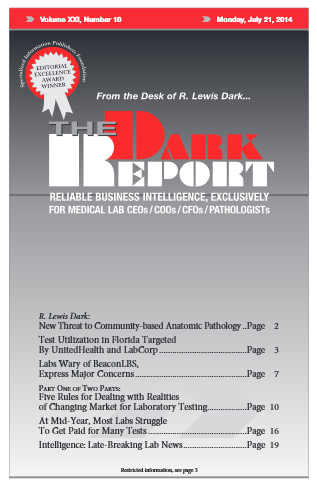CEO SUMMARY: Swift transformation of the American healthcare system is causing financial challenges for those clinical labs and pathology groups that have been slow to react to these developments. At NorDx Laboratories in Scarborough, Maine, the team is following the classic five rules for laboratory success. However, as NorDx CEO Stan Schofield said in his […]
To access this post, you must purchase The Dark Report.


